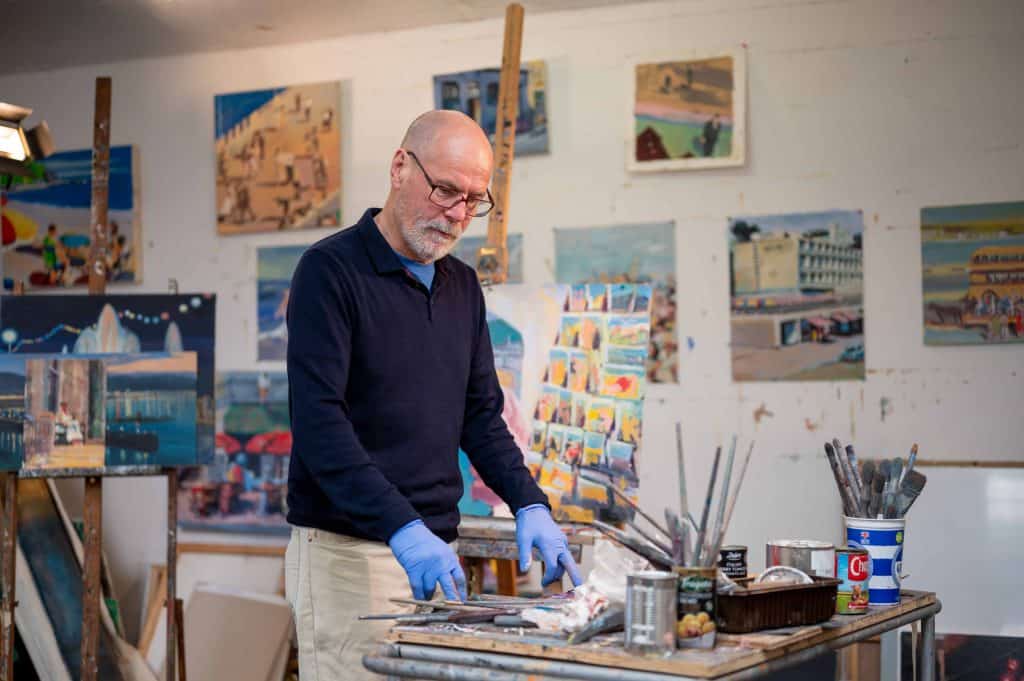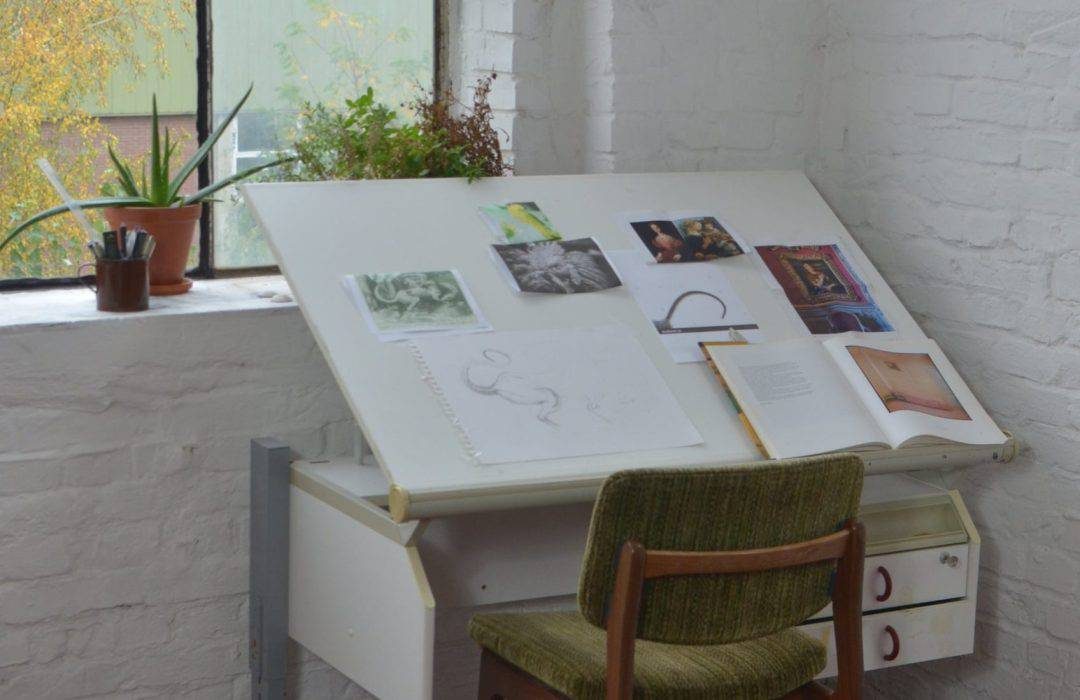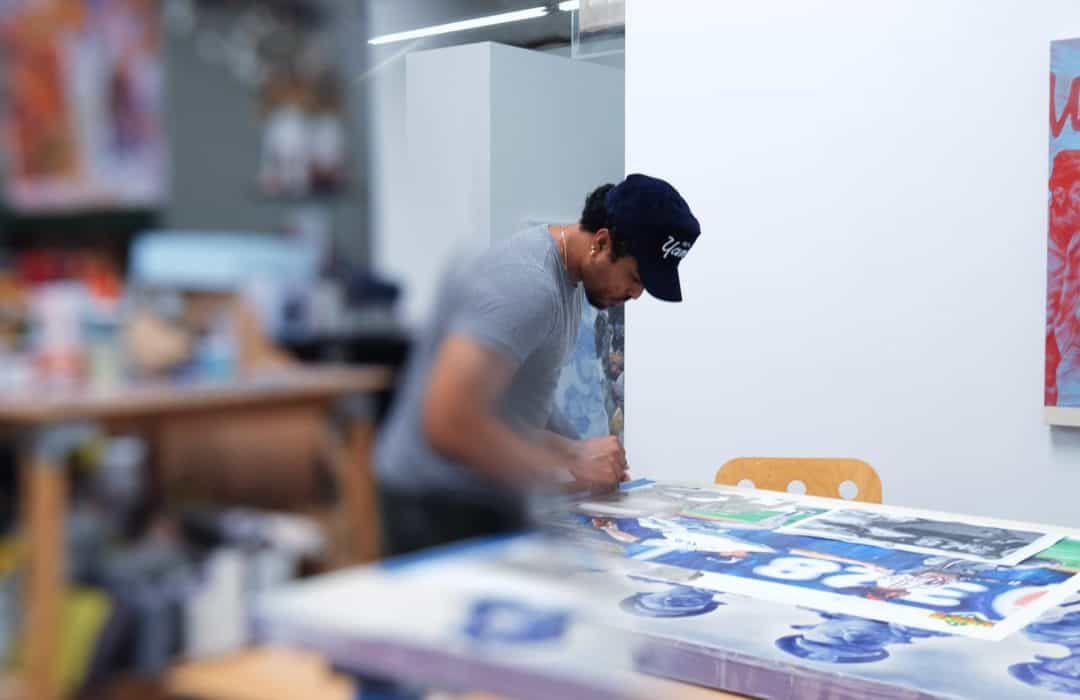
22 Jan Artist Residencies: Opportunities and Benefits
Artist residencies are dynamic spaces that foster the confluence of experimentation, creativity, and cooperation. They provide modern artists with the time and space they need to hone their craft outside of conventional studio settings. These programs’ enormous influence on the development and fostering of contemporary art has led to their global recognition. Artist residencies remove geographical barriers by providing a range of surroundings and individualized support systems, enabling artists to find inspiration in international situations. Because these programs are collaborative in character, they encourage multidisciplinary interactions and encourage artists to challenge preconceived notions and create innovative works.
In essence, artist residencies function as catalysts for the evolution of contemporary art, acting as incubators for innovation. Their global reach and communal atmosphere create a dynamic landscape where artists from different corners of the world come together, celebrating diversity and pushing the boundaries of artistic expression. In this vibrant ecosystem, creativity flourishes, and the resulting works reflect the rich tapestry of ideas and perspectives that emerge when creative minds unite in pursuit of artistic excellence.
Types of Artist Residencies

Photo by Skylar Kang
Location-based Residencies
Location-based Residencies encompass a diverse range of environments tailored to inspire and support artists. In Rural Residencies, nestled within natural landscapes, artists are provided with a tranquil setting that fosters immersion in nature. This unique experience offers abundant inspiration and access to materials specific to the surrounding environment. Conversely, Urban Residencies situated in bustling cities create opportunities for artists to engage with local communities, cultural hubs, and diverse artistic influences, encouraging a dynamic and stimulating experience. International Residencies form a global platform for cross-cultural exchange, facilitating artistic dialogue on an international scale. These programs contribute to the development of a rich tapestry of perspectives as artists from different backgrounds come together to create and share their work.
Discipline-specific Residencies
Discipline-specific Residencies are tailored to various artistic mediums. Programs catering to Visual Arts, Music, Literature, Dance, or Performance Art enable artists to delve deeply into their chosen discipline, honing their skills and pushing the boundaries of their craft. Media-specific Residencies, dedicated to film, photography, digital art, and other media, provide specialized resources and expertise, supporting artists in mastering their chosen medium. Interdisciplinary Collaborations encourage artists to explore collaborations across different disciplines, fostering innovation and the creation of boundary-pushing projects that transcend traditional artistic boundaries.
Theme-based Residencies
Theme-based Residencies delve into specific subjects, addressing social and environmental issues through art. Residencies focused on Social and Environmental Issues use art as a powerful medium to explore and address pressing challenges, allowing artists to contribute to meaningful conversations surrounding these topics. Historical or Cultural Contexts form the basis of other programs, providing artists with a framework for exploration within specific historical periods or cultural contexts, fostering a deeper understanding of the past. Community Engagement and Social Impact Residencies are designed to actively involve artists in the communities they serve. These programs encourage artists to create work that engages with and contributes to local communities, promoting social change through artistic expression. Artists participating in these residencies become catalysts for positive transformation, using their creative endeavors to address social issues and make a lasting impact.

Photo by Mike Von
Benefits for Contemporary Artists
Benefit | Description |
Time and Space | Dedicated studios and living quarters provide the necessary environment for focused artistic exploration. |
Financial Support | Stipends, grants, or covered living expenses alleviate financial pressures, allowing artists to fully immerse themselves. |
Professional Development | Workshops, lectures, and mentorship opportunities from established artists and curators contribute to ongoing growth. |
Networking | Connections with fellow artists, curators, and potential collaborators, fostering a supportive and expansive artistic network. |
Exposure and Recognition | Public exhibitions, publications, or presentations showcase the artist’s work to new audiences, enhancing visibility. |
Personal and Artistic Growth | Dedicated time for experimentation, reflection, and pushing creative boundaries, fostering personal and artistic development. |

Photo by Matthieu Comoy
Conclusion
Artist residencies are indispensable incubators for contemporary art, fostering creativity, experimentation, and collaboration. Tailored to accommodate diverse artistic practices, these programs provide dedicated time and space for emerging talents to explore new techniques and refine their voices. The communal environment encourages the exchange of ideas and skills, leading to lasting connections within the art world. Beyond individual growth, residencies serve as bridges between cultures, promoting cross-cultural exchanges and contributing to a global dialogue in the arts.
Artist residencies empower aspiring artists to break free from the constraints of daily life, enabling them to fully immerse themselves in their creative processes. The inclusivity of these programs ensures accessibility for artists across various disciplines. The collaborative spirit and shared experiences among a diverse group of artists contribute to the formation of networks that extend beyond the residency itself. Ultimately, with dedicated time, inspiring spaces, and a supportive community, artist residencies play a crucial role in cultivating groundbreaking creations and enduring artistic connections in the ever-evolving landscape of contemporary art.
Key Takeaways
- Diverse Opportunities: Artist residencies come in various forms, from rural retreats to urban hubs and international exchanges, catering to a wide range of artistic preferences and goals.
- Specialized Focus: Residencies are available for specific artistic disciplines, media, and themes, allowing artists to tailor their experience to their unique interests.
- Comprehensive Benefits: Artists gain not only dedicated time and space but also financial support, professional development, networking opportunities, and exposure to new audiences.
- Global Perspective: International residencies foster cross-cultural exchange, enriching artistic practices with diverse perspectives and influences.
- Community Engagement: Residencies focused on social impact and community engagement provide artists with a platform to contribute meaningfully to societal issues.
FAQs
How can I find the right artist residency for me?
It’s important to do extensive study in order to choose the perfect artist residence. Look for reputable residency programs that fit your goals and creative concentration first. Think of your ideal spot, keeping in mind the surroundings and available amenities that would facilitate your creative process the most. Define your goals for the residency as well, including any personal development, teamwork, or project accomplishment that you may have. This thorough process guarantees that the residence you select will fulfill your practical requirements as well as your artistic vision.
Are artist residencies only for established artists?
No, artist residencies are not exclusively for established artists. These programs cater to individuals at various stages of their artistic careers, providing opportunities for both emerging and recognized talents. Residencies foster an inclusive environment that encourages creative development and networking. Emerging artists, in particular, can benefit significantly from the supportive community, mentorship, and exposure to new perspectives that residencies offer. The diversity of participants enhances the overall experience and contributes to a vibrant and dynamic artistic community.
What should I include in my residency application?
Crafting a compelling residency application requires attention to several key elements. Start with a well-articulated artist statement that reflects your artistic philosophy and goals. Showcase a strong portfolio that demonstrates the depth and diversity of your work. It’s crucial to highlight your skills and creativity through a selection of your best pieces. Additionally, establish a clear connection between your artistic practice and the theme or focus of the residency. Demonstrating how your work aligns with the residency’s goals enhances the relevance of your application and showcases your commitment to contributing meaningfully to the residency community.
Are virtual residencies as beneficial as physical ones?
Virtual residencies offer unique benefits but differ from physical ones in several aspects. The increased accessibility and flexibility of virtual residencies make them valuable for artists who may have constraints related to location or scheduling. Participating in a virtual residency allows artists to engage with a global community, fostering diverse connections and collaborations. However, the tangible and immersive aspects of physical residencies, such as in-person interactions, access to specialized facilities, and a focused environment, contribute to a unique and enriching experience. The choice between virtual and physical residencies depends on the individual artist’s preferences, goals, and the nature of their creative practice.
How competitive are artist residency programs?
The competitiveness of artist residency programs varies, with some being highly sought after and others more accessible. Building a strong application is key to increasing your chances of acceptance. This involves not only presenting a compelling artist statement and a robust portfolio but also demonstrating relevant experience and a clear artistic vision. Tailoring your application to showcase how your work aligns with the residency’s theme or focus is crucial. While some programs may receive a high volume of applications, a well-prepared and thoughtfully crafted submission increases your competitive edge. Residencies appreciate applicants who show a genuine commitment to their artistic practice and a strong potential for contributing meaningfully to the residency community.
Illuminate the contributions of Key Figures in Global Art Dialogue who have contributed to shaping international art conversations, exploring their innovative perspectives and enduring impact on the global artistic landscape.

